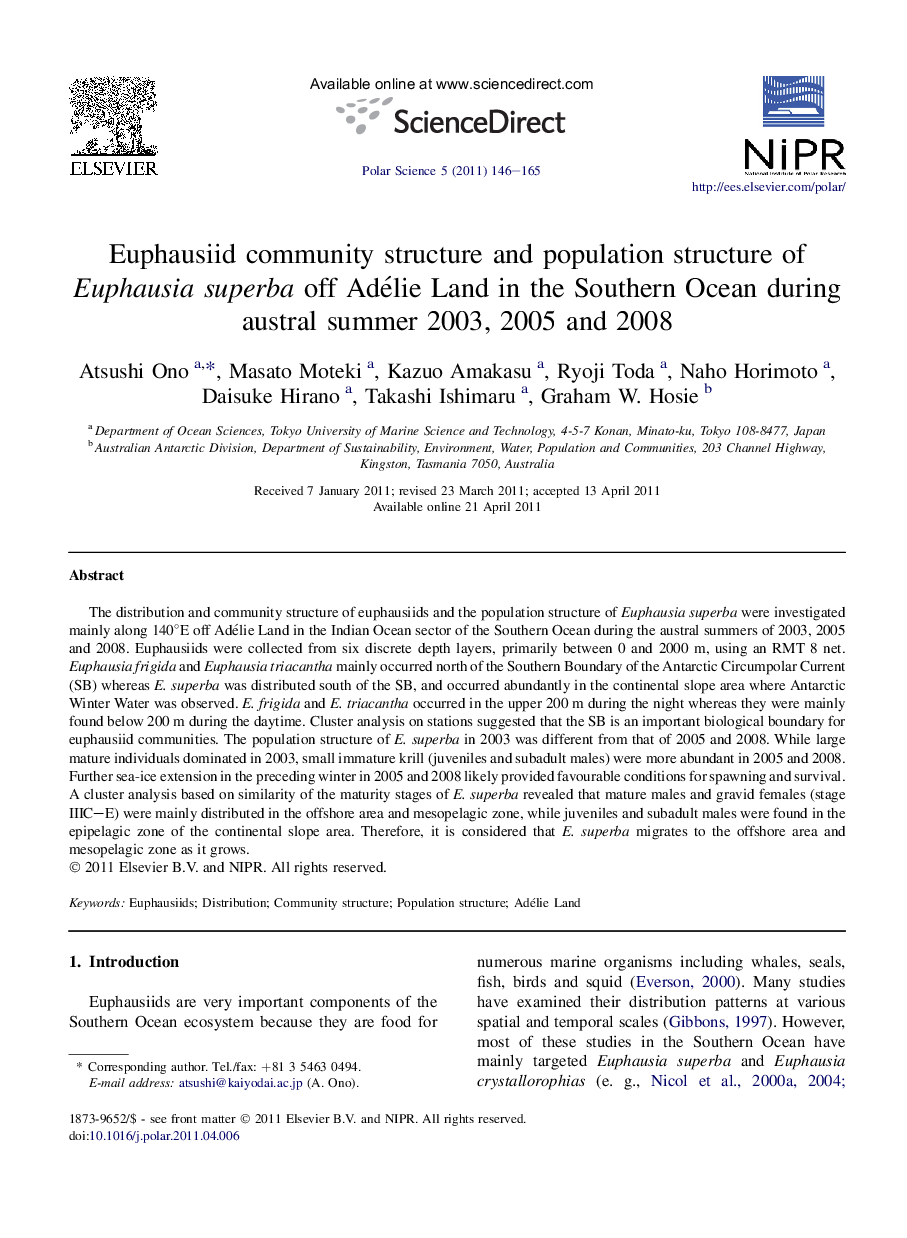| Article ID | Journal | Published Year | Pages | File Type |
|---|---|---|---|---|
| 4683241 | Polar Science | 2011 | 20 Pages |
The distribution and community structure of euphausiids and the population structure of Euphausia superba were investigated mainly along 140°E off Adélie Land in the Indian Ocean sector of the Southern Ocean during the austral summers of 2003, 2005 and 2008. Euphausiids were collected from six discrete depth layers, primarily between 0 and 2000 m, using an RMT 8 net. Euphausia frigida and Euphausia triacantha mainly occurred north of the Southern Boundary of the Antarctic Circumpolar Current (SB) whereas E. superba was distributed south of the SB, and occurred abundantly in the continental slope area where Antarctic Winter Water was observed. E. frigida and E. triacantha occurred in the upper 200 m during the night whereas they were mainly found below 200 m during the daytime. Cluster analysis on stations suggested that the SB is an important biological boundary for euphausiid communities. The population structure of E. superba in 2003 was different from that of 2005 and 2008. While large mature individuals dominated in 2003, small immature krill (juveniles and subadult males) were more abundant in 2005 and 2008. Further sea-ice extension in the preceding winter in 2005 and 2008 likely provided favourable conditions for spawning and survival. A cluster analysis based on similarity of the maturity stages of E. superba revealed that mature males and gravid females (stage IIIC–E) were mainly distributed in the offshore area and mesopelagic zone, while juveniles and subadult males were found in the epipelagic zone of the continental slope area. Therefore, it is considered that E. superba migrates to the offshore area and mesopelagic zone as it grows.
